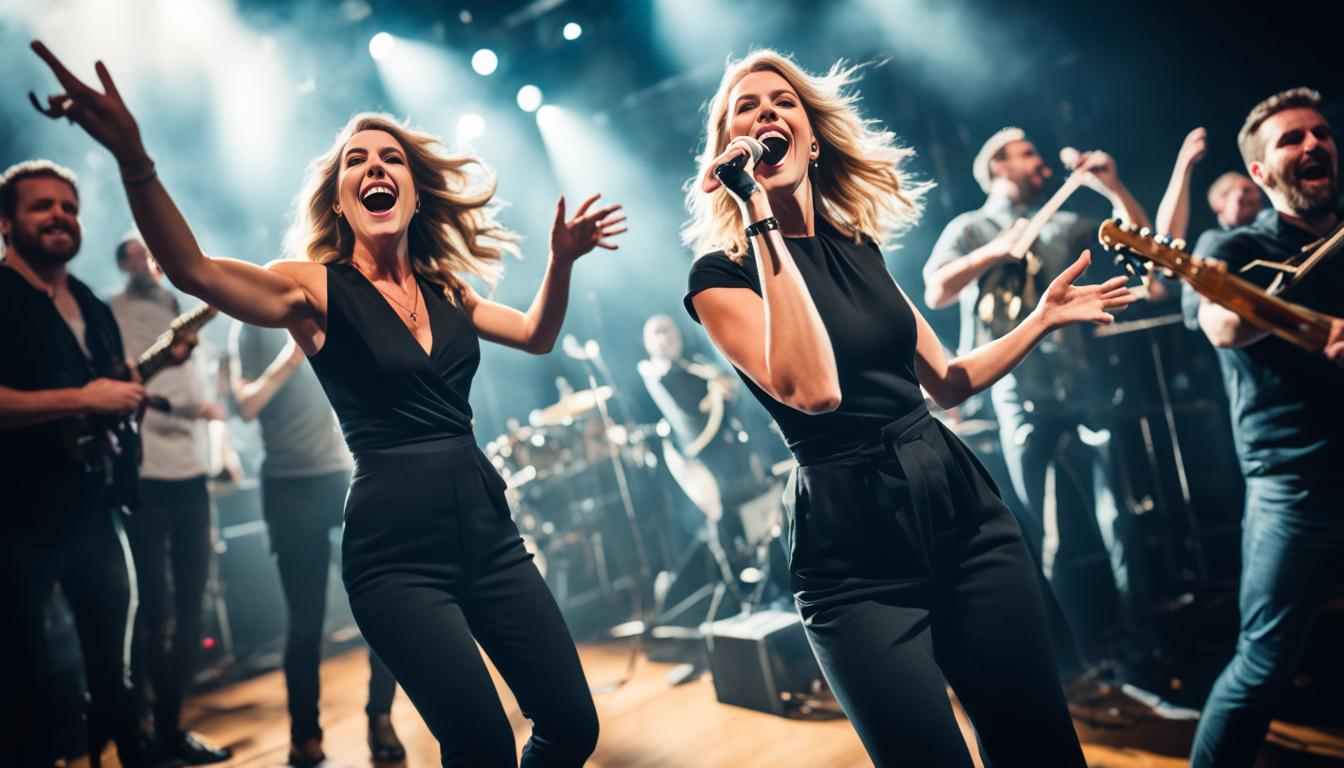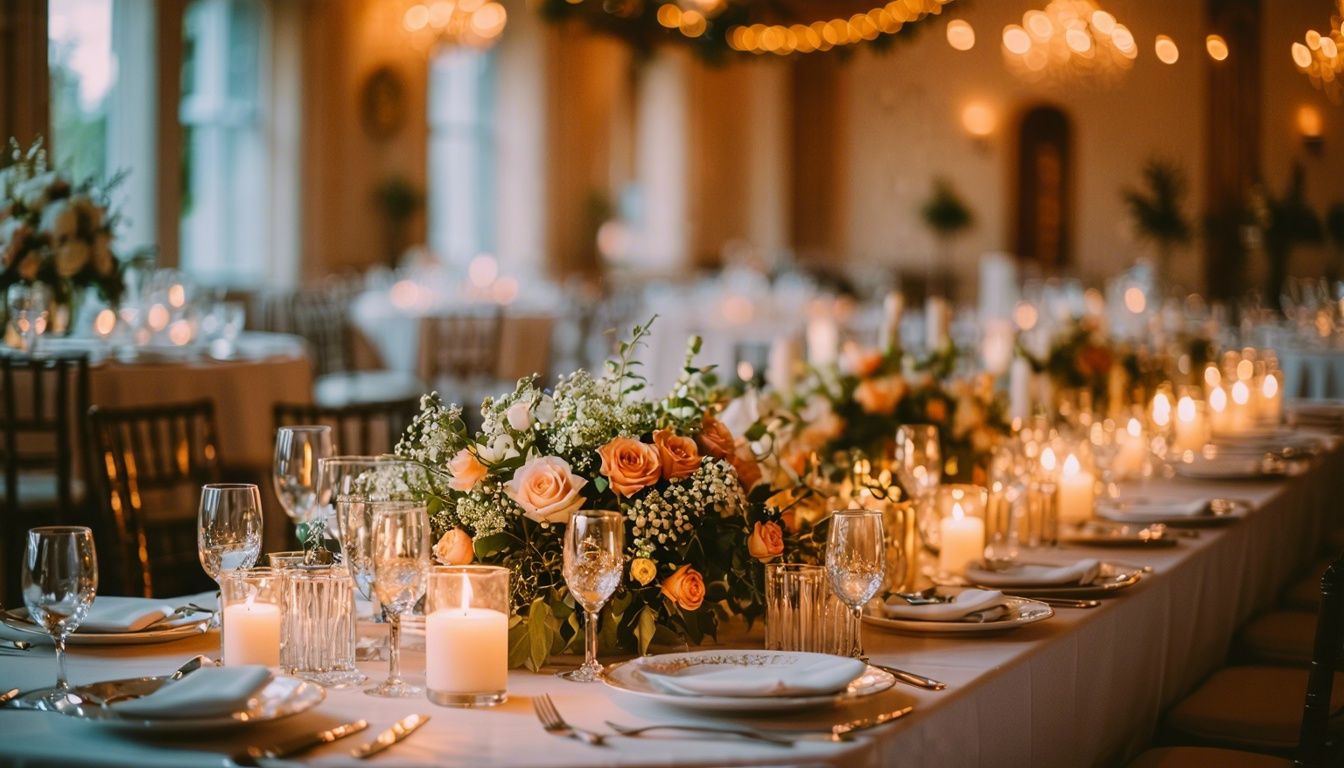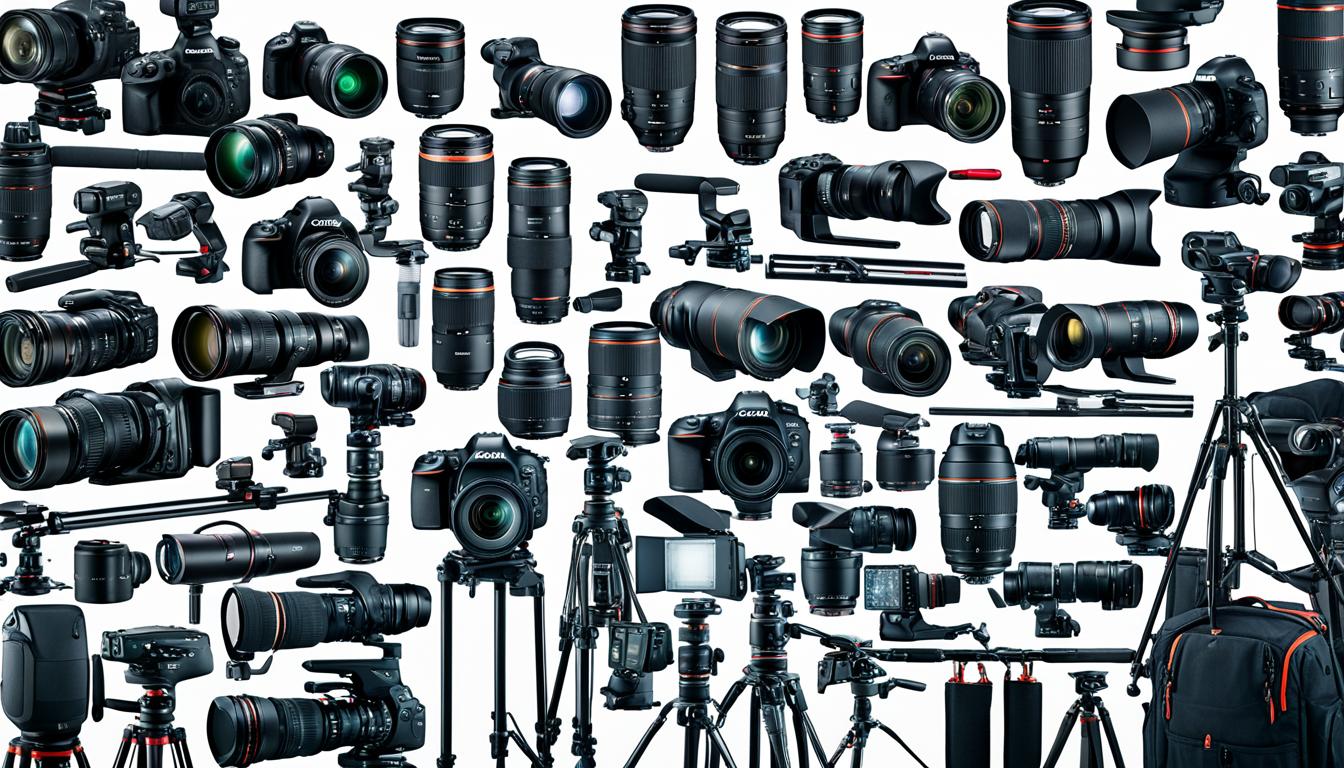Understanding the basics of composition and framing is essential for capturing compelling event photos. Whether you’re a seasoned event photographer or just starting out, honing your skills in composition and framing will elevate your work to new heights.
Composition involves elements such as framing, centers of interest, dividing the image area, color, lines, shapes, repetition, texture, and balance. It’s about arranging these elements in a way that creates a visually appealing and impactful image.
Framing, in particular, is about strategically placing your subject within the frame, considering what to include and exclude to create a visually appealing composition. By exploring different techniques and principles of composition and framing, you can improve your event photography skills and tell a compelling visual story.
Join us as we delve into the world of composition and framing in event photography. We’ll explore the importance of composition, the role of framing, techniques for effective framing, common mistakes to avoid, and creative framing ideas to add creativity and visual interest to your event photos.
Key Takeaways:
- Understanding composition and framing is essential for capturing compelling event photos.
- Composition involves elements such as framing, color, lines, shapes, and balance.
- Framing strategically places the subject within the frame to create visually appealing compositions.
- Effective framing techniques include depth of field, experimenting with angles, and paying attention to backgrounds.
- Avoid common framing mistakes such as overcrowding the frame and blocking key elements.
What is Photographic Composition and Why is it Important?
Photographic composition is the arrangement of elements within a photograph to create a visually pleasing and impactful image. It is the art of visual storytelling, using techniques such as framing, lines, colors, shapes, and balance to convey a message or evoke emotions. In event photography, composition plays a crucial role in capturing the atmosphere, emotions, and key moments of an event in a visually appealing way.
By understanding the role of composition and practicing various techniques, event photographers can elevate their images from mere snapshots to artistic and meaningful photographs. Composition allows us to tell a compelling visual story, capturing the essence of an event and conveying its narrative through the arrangement and placement of subjects, elements, and visual elements within the frame.
Visual storytelling is about more than just taking a photograph; it’s about creating an experience for the viewer, allowing them to feel the emotion, energy, and ambiance of the moment. A well-composed photograph draws the viewer in, engages their senses, and leaves a lasting impression. It enables us to communicate our unique perspective and interpretation of the event, fostering a deeper connection between the viewer and the photograph.
Effective composition in event photography involves the deliberate consideration of various elements, such as framing the subject, using leading lines to guide the viewer’s eye, incorporating complementary colors to enhance visual impact, and creating a sense of balance and harmony within the frame. These techniques not only make our photographs aesthetically pleasing but also serve as tools to communicate our creative vision and evoke specific emotions in the viewer.
By appreciating the importance of photographic composition and applying the appropriate techniques, event photographers can elevate their craft, capturing compelling and visually striking images that resonate with the audience and stand the test of time.
The Role of Framing in Event Photography
Framing plays a crucial role in event photography as it serves multiple purposes in creating visually engaging and impactful compositions. By strategically utilizing various framing techniques, event photographers can draw the viewer’s attention to the subject, add depth and context to the photo, and contribute to the storytelling aspect of the image.
One of the key benefits of framing is its ability to guide the viewer’s eye within the photograph. By using elements within the scene as frames, such as natural frames like tree branches or windows, architectural frames like buildings or archways, or even incorporating shadow and light as frames, photographers can create a visual pathway that leads the viewer’s gaze towards the main subject. This not only adds a sense of movement and direction but also helps to highlight and emphasize the subject within the composition.
“Framing acts as a creative tool that enhances the impact of the photo by providing visual cues and context.”
In event photography, framing can also contribute to storytelling. By carefully selecting and positioning elements within the frame, photographers can create a sense of narrative and evoke emotions. For example, using people as frames can add a human element and convey the connection between individuals or capture the interaction between the subject and the surrounding environment. Additionally, framing can be used to create a sense of anticipation, suspense, or focus on a specific detail, further enhancing the storytelling aspect of the photo.
When employing framing techniques, event photographers should consider the composition as a whole. The frame should complement the subject and enhance its impact without overpowering it. By finding a balance between the frame and the subject, photographers can create visually captivating compositions that effectively convey the desired message to the viewer.
Using frames in event photography is not only a technique to enhance the visual appeal of the photo but also a creative tool to express ideas and tell stories. By experimenting with different framing techniques and elements, photographers can push the boundaries of their creativity and capture truly compelling and memorable moments.
Framing Techniques for Event Photography:
| Framing Technique | Description |
|---|---|
| Natural Frames | Using elements from the natural environment, such as tree branches or windows, to frame the subject and draw attention to it. |
| Architectural Frames | Utilizing architectural structures like buildings or archways to frame the subject and provide a contextual framework for the photo. |
| Shadow and Light Frames | Using the interplay of shadow and light to create frames that enhance the composition and add visual interest. |
| People as Frames | Incorporating people within the frame to add a human element and create a connection between the subject and the viewer. |
Techniques for Effective Framing in Event Photography
In event photography, mastering the art of framing is key to creating visually compelling and well-composed photos. By employing various techniques, you can enhance the impact of your images and capture the essence of the event. Here are some effective framing techniques to consider:
1. Using Depth of Field
Depth of field is a powerful tool that allows you to control what’s in focus and what’s blurred in your frame. By using a shallow depth of field, you can draw attention to your subject and create a sense of depth. This technique helps separate the subject from the background, making it stand out and become the focal point of the photo.
2. Experimenting with Angles
Don’t be afraid to explore different angles when framing your shots. By changing your perspective, you can discover unique compositions that add interest and dynamism to your photos. Try shooting from low angles to make the subject appear more imposing or experiment with bird’s-eye views for a fresh and captivating perspective.
3. Paying Attention to Backgrounds
The background of your frame plays a crucial role in the overall composition of your photo. Make sure to carefully consider what appears behind your subject, as distracting or cluttered backgrounds can take away from the impact of your image. Look for clean and unobtrusive backgrounds that enhance the visual appeal and help your subject stand out.
4. Balance in Framing
Achieving balance within your frame is essential for creating visually pleasing compositions. Consider the placement of your subject in relation to the other elements in the frame. Strive for symmetry or asymmetry, depending on the desired effect, to create a sense of harmony and visual equilibrium.
| Technique | Description |
|---|---|
| Using Depth of Field | Control the focus and blur to make the subject stand out. |
| Experimenting with Angles | Explore different perspectives to add interest and dynamism. |
| Paying Attention to Backgrounds | Avoid distractions and choose backgrounds that enhance the subject. |
| Balance in Framing | Achieve visual harmony by considering the placement of elements. |
By incorporating these techniques into your event photography, you can elevate your compositions and create visually captivating images that tell a compelling story.
Common Framing Mistakes to Avoid in Event Photography
When it comes to event photography, composition and framing play a vital role in capturing memorable moments. However, it’s essential to be aware of common framing mistakes to ensure the quality of your photos. Let’s explore some crucial mistakes to avoid:
1. Overcrowding the Frame
One common mistake is overcrowding the frame with too many elements. While it may be tempting to include everything, this can lead to a cluttered composition. Instead, carefully choose your subjects and surroundings to maintain a clear focus and avoid visual distractions.
2. Blocking Key Elements
Another mistake to avoid is blocking key elements of the subject with your frame. The frame should enhance the composition, not obstruct important details. Take your time to position the frame strategically, ensuring the subject remains the focal point.
3. Forcing a Frame
Forcing a frame where it doesn’t naturally fit or contribute to the story of the photograph can result in an artificial look. It’s important to let the scene guide your framing decisions, allowing the subject and composition to flow naturally and authentically.
4. Lack of Balance
Maintaining a balance in framing is crucial for creating visually appealing compositions. The frame should complement the subject without overpowering it. Pay attention to the placement of elements within the frame to ensure a harmonious and well-balanced composition.
To illustrate these common framing mistakes, refer to the following table:
| Mistake | Description | Example |
|---|---|---|
| Overcrowding the Frame | Adding too many elements, leading to a cluttered composition. | |
| Blocking Key Elements | Obstructing important details of the subject with the frame. |  |
| Forcing a Frame | Creating an artificial look by imposing a frame that doesn’t naturally fit. | |
| Lack of Balance | Overpowering the subject by not maintaining a harmonious composition. |  |
By avoiding these framing mistakes, you can elevate your event photography and create captivating compositions that truly capture the essence of the moment.
Creative Framing Ideas for Event Photography
To add creativity and visual interest to event photography, we need to explore different framing ideas. By incorporating these creative framing techniques, we can produce visually captivating and impactful images that stand out from the crowd.
Reflections and Mirrors
One creative framing idea is to use reflections in water, mirrors, or any reflective surface. By capturing your subject within these reflective frames, you can add a unique and intriguing element to your composition. The reflection can create a sense of depth and dimension, making your photo more visually engaging.
Using Color Blocks
Bright colors or distinct color blocks can act as frames in event photography. When you come across vibrant and eye-catching colors, consider positioning your subject within the frame to create a visually appealing composition. This technique works particularly well in minimalistic compositions, where the vibrant colors can become the focal point of the image.
Frame Within a Frame
Looking for opportunities to create a frame within a frame can add multiple layers of depth to your photos. Find natural frames within your surroundings, such as archways, doorways, or tree branches, to frame your subject. This technique not only adds visual interest but also helps guide the viewer’s eye towards the main focal point of your photograph.
Adding Depth to Compositions
To add depth to your compositions, you can experiment with foreground elements that frame your subject. By including objects in the foreground, such as foliage, architecture, or other elements, you can create a sense of depth and context within your image. This technique adds visual interest and draws the viewer’s eye into the scene.
By exploring these creative framing ideas in event photography, we can elevate our compositions and create visually captivating and impactful images. Remember to experiment and think outside the box to capture unique and compelling moments during your next event.
Conclusion
Mastering composition and framing in event photography is a skill that takes practice, education, and a keen eye for detail. By understanding the basics of composition, particularly framing, event photographers can elevate their images and tell compelling visual stories.
Effective framing techniques, such as using depth of field, experimenting with angles, and paying attention to backgrounds, can significantly enhance the impact of event photos. By strategically framing the subject within the frame, photographers can create visually engaging compositions that draw the viewer’s attention and add depth and context to the photo.
Avoiding common framing mistakes, such as overcrowding the frame or blocking key elements, is crucial to ensuring high-quality photos that enhance the subject rather than distract from it. Additionally, exploring creative framing ideas, including reflections and color blocks, can add creativity, depth, and visual interest to event photography compositions.
In summary, composition and framing play a crucial role in event photography, allowing photographers to capture unforgettable moments and tell a compelling story. By mastering these skills, photographers can create images that captivate viewers, communicate emotions, and immortalize the essence of any event.
FAQ
What is composition in event photography?
Composition in event photography refers to the arrangement and positioning of elements within a photograph to create a visually pleasing and impactful image. It involves considering elements such as framing, lines, colors, shapes, and balance to convey a message or evoke emotions.
Why is composition important in event photography?
Composition is important in event photography because it helps capture the atmosphere, emotions, and key moments of an event in a visually appealing way. It allows photographers to tell a compelling visual story by creating a well-composed image that engages the viewer and enhances the impact of the photograph.
What is the role of framing in event photography?
Framing in event photography plays a crucial role in drawing the viewer’s attention to the subject and adding depth and context to the photo. It involves strategically using elements within the scene as frames, such as natural frames, architectural frames, shadow and light frames, or even using people as frames, to create visually engaging compositions.
What are some techniques for effective framing in event photography?
Some techniques for effective framing in event photography include using depth of field to blur the frame and make the subject stand out, experimenting with different angles to add interest, paying attention to the background to avoid distractions, and achieving balance to ensure the frame complements the subject without overpowering it.
What are common framing mistakes to avoid in event photography?
Common framing mistakes to avoid in event photography include overcrowding the frame with too many elements, obstructing key elements of the subject with the frame, forcing a frame where it doesn’t naturally fit, and failing to maintain balance between the frame and the subject.
What are some creative framing ideas for event photography?
Some creative framing ideas for event photography include using reflections in water or mirrors as frames, incorporating bright colors or distinct color blocks as frames in minimalistic compositions, looking for opportunities to create a frame within a frame to add depth, and experimenting with different framing techniques to add creativity and visual interest to the photographs.
How can mastering composition and framing improve event photography?
Mastering composition and framing in event photography allows photographers to elevate their images from snapshots to artistic and meaningful photographs. By understanding the basics of composition, particularly framing, event photographers can capture the atmosphere, emotions, and key moments of an event in visually appealing ways, enhancing the impact of their photos and telling compelling visual stories.
What is the significance of composition and framing in event photography?
Composition and framing play a crucial role in event photography as they allow photographers to capture unforgettable moments and tell compelling stories through visuals. By effectively composing and framing their photographs, event photographers can create visually engaging images that capture the essence and emotions of the event, resulting in impactful and memorable photographs.
How can event photographers improve their composition and framing skills?
Event photographers can improve their composition and framing skills by gaining experience through practice, seeking education and guidance from professionals in the field, studying the work of other photographers for inspiration, and experimenting with different techniques and principles of composition and framing. Continuous learning and exploration will help photographers refine their skills and create visually compelling images.
How Can Mastering Architectural Detail Photography Improve Event Photo Composition and Framing?
Mastering architectural detail photography can greatly improve event photo composition and framing. By understanding how to capture the intricate details of a building, photographers can apply those skills to frame and compose event photos in a more visually appealing way, enhancing the overall aesthetic and impact of the images.
Source Links
- https://seaislenews.com/joe-blanchard-of-asheville-nc-on-the-art-of-composition-mastering-framing-in-your-photos/
- https://liamsmithphotography.com/wedding-photography/resources-for-photographers/mastering-composition-to-improve-your-wedding-photography/
- https://photopxl.com/mastering-the-art-of-photographic-composition-part-one/




